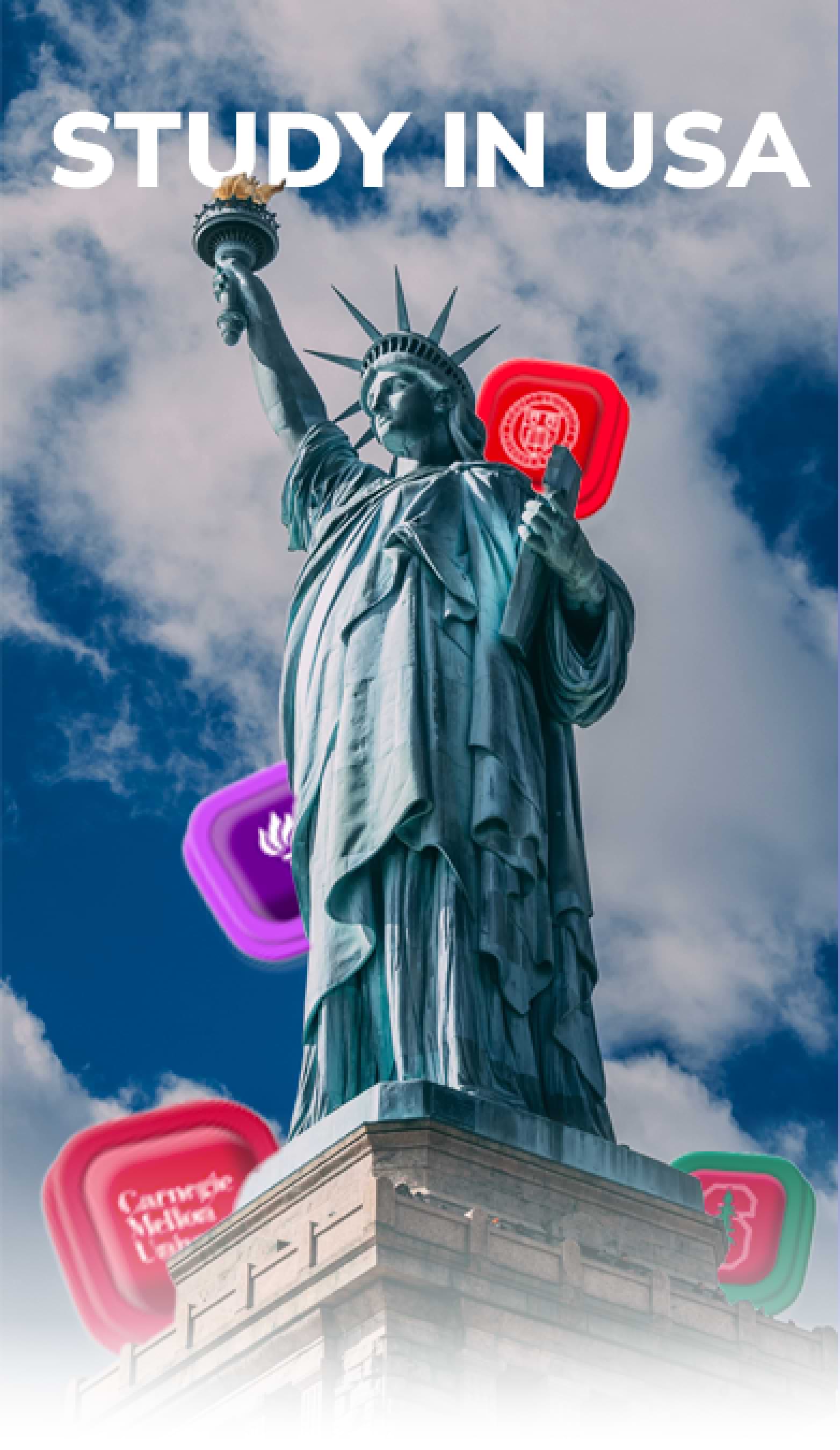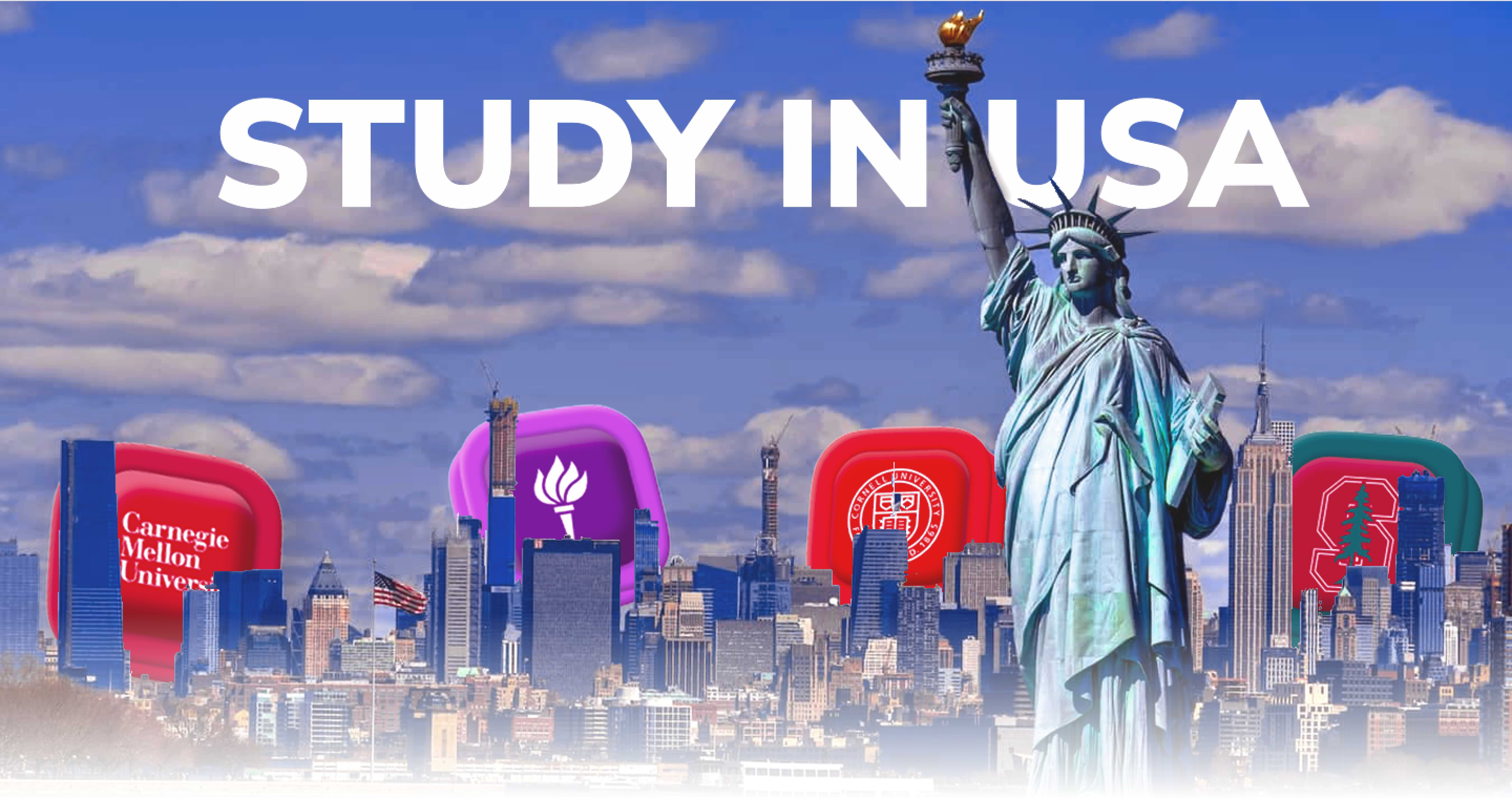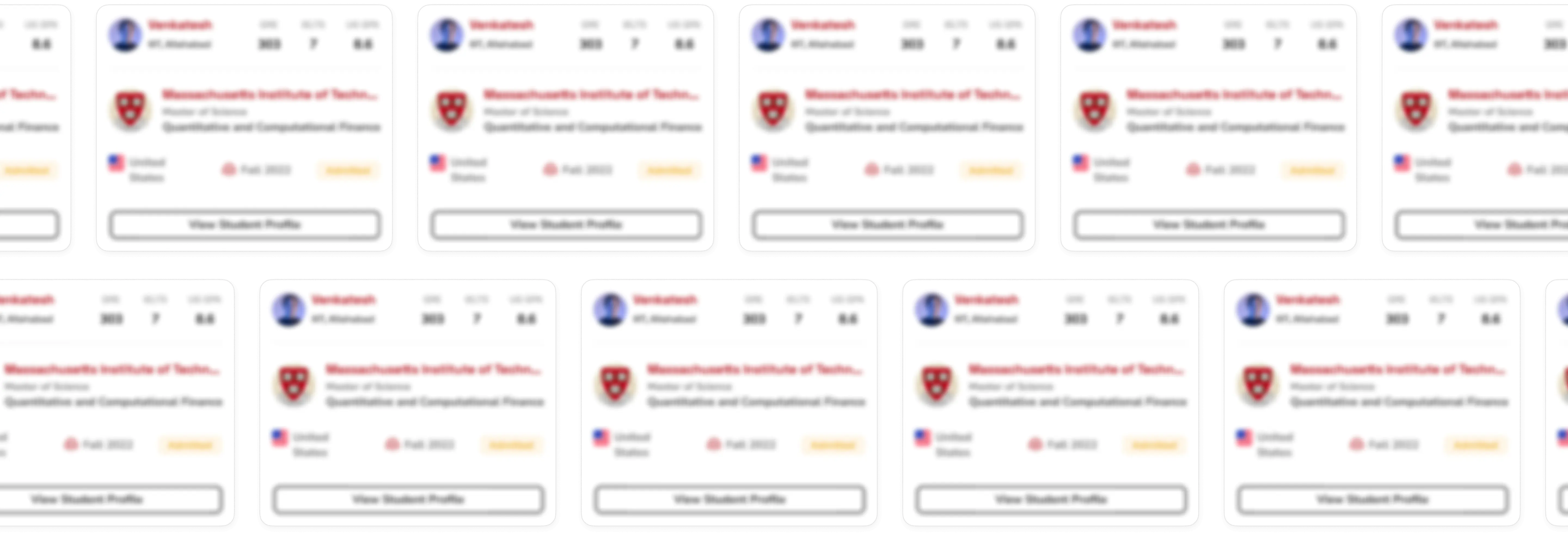
OVERVIEW

Why Choose the USA for Your Education Adventure?
Step into a chapter of your life where education goes hand-in-hand with self-discovery. In the USA, your studies are backed by innovation and a spirit of adventure, setting the stage for a future as bright as the lights of Times Square.

Learn from the Best
In the USA, classrooms are led by some of the brightest minds. You'll be surrounded by inspiration and support as you discover your passions and define your career path.

Join a Global Family
You'll share coffee, ideas, and stories with friends from across the globe. It's not just about the books; it's about the shared experiences that last a lifetime.

Hands-On Adventure
Get ready for a learning adventure where you're not just reading about theories—you're testing them in real life. This is education that prepares you for the world, and it's all waiting for you in the USA.
Highlights
Robotics Data Science Engineering Business Arts Sciences
Most Popular courses
3982
Colleges
268,923
Indian Students
$30,000
Average Tuition Fees
$15,000
Cost of Living (Annual)
Top Places to Study in the USA
New York
New York

Characterized by the creative industries like music, television, and film.
Cost of Living

Average cost per year
$40,000 - $80,000
Weather
Hottest Month
July
Coldest Month
Jan

Top universities in USA

#2
QS RANK

#6
QS RANK

#1
QS RANK

#3
QS RANK

#5
QS RANK

#4
QS RANK

They Secured Their Dream. Are You Next?
Dive into the success stories of students who've secured spots in some of the most prestigious institutions in the USA. Get inspired, compare profiles, and discover what it takes to join the ranks of these top admits.
Application Essentials for US Universities
Start your application with these key documents in hand:

Valid Passport

Standardized Tests: ACT/SAT/LSAT for undergraduates; GMAT/GRE for graduates

Reference Letters: Quantity varies by university

Updated CV/Resume

Essays: As required by the university

Extracurricular Activity Certificates

Recommendation Letters: If employed

English Proficiency: TOEFL/IELTS scores

Academic Transcripts

Statement of Purpose (SOP)

Course-Specific Portfolio

Proof of Financial Financial Resources
Your Roadmap to US College Applications

Is Higher Education in Australia USA It?
Pros

World-Class Institutions:
The USA boasts numerous prestigious universities.

Research Opportunities:
Leading in innovative research projects.

Flexible Curriculum:
Wide range of subjects and specializations.

Post-Study Work Opportunities:
Programs like OPT provide work opportunities post-graduation.
Cons

High Tuition Fees:
Can be costly, especially at private universities.

Competitive Admissions:
Stringent criteria at top universities.

Healthcare Costs:
International students need adequate health insurance.

Varied Quality:
Educational quality differs across institutions.
Understanding the Cost: Breakdown of Expenses



Tuition Fees:
$30,000 - $70,000 / yearly

Electricity
$920.58 / yearly

Transportation (Public Transit)
$600 - $1,800 / yearly

Housing
$8,000 - $12,000 / yearly

Personal Expenses
$2,400 - $4,800 / yearly

Healthcare (Student Health Insurance)
$1,000 - $2,500 / yearly
Average Expenditure per year :
$40,000 - $80,000

Your Path to Studying in the USA: Navigating Visas and Immigration
F1 Visa
Cost: $ 160
Specifically for those enrolled in academic programs at accredited US colleges, universities, seminaries, conservatories, and high schools, or in language training programs
M1 Visa
Cost: $ 160
Aimed at students pursuing vocational or non-academic studies, excluding language training. It's ideal for individuals participating in practical training programs that are not leading to academic qualifications.
J1 Visa
Cost: $ 160
For individuals engaging in approved exchange programs, including scholars, researchers, and students. It's tailored to those involved in cultural exchanges and is not limited to academic studies.
Post-Visa Immigration Process:
Work Options:
Upon arrival in the USA with an F1 visa, students may work up to 20 hours per week on campus. Full-time employment is permitted during breaks, providing financial aid and community engagement.
Extensions:
Should circumstances demand, students can apply for program extensions, ensuring they have adequate time to fulfill their academic and research pursuits.
Graduation:
Following graduation, there is a 60-day grace period to prepare for departure or transition to work, typically through programs like STEM OPT or employer-based visas.
Exploring Life, Learning, and Culture in US Colleges
Applicants must provide proof of admission to a US institution, financial stability, and ties to their home country.
Yes, students can travel home; however, they must ensure their visa and related documents are in order for re-entry to the US.
Students are typically required to have health insurance, either through their institution or a private provider.
Most institutions offer various support services, including academic assistance, language services, and cultural integration programs.
Budgeting, seeking on-campus employment, and applying for scholarships are common strategies for managing expenses.









Ready to elevate your study abroad journey?
Book a call with us now and take the first step towards your global future!





















